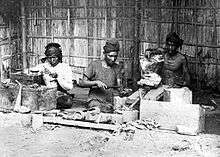Goldsmith
A goldsmith is a metalworker who specializes in working with gold and other precious metals. Nowadays they mainly specialize in jewellery-making but historically, goldsmiths have also made silverware, platters, goblets, decorative and serviceable utensils, ceremonial or religious items, and rarely using Kintsugi,[1] but the rising prices of precious metals have curtailed the making of such items to a large degree.
Goldsmiths must be skilled in forming metal through filing, soldering, sawing, forging, casting, and polishing metal. The trade has very often included jewellery-making skills, as well as the very similar skills of the silversmith. Traditionally, these skills had been passed along through apprenticeships, however, more recently jewellery arts schools, specializing in teaching goldsmithing and a multitude of skills falling under the jewellery arts umbrella, are available. Many universities and junior colleges also offer goldsmithing, silversmithing, and metal arts fabrication as a part of their fine arts curriculum.
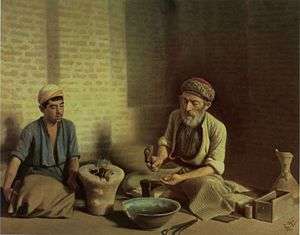
At least in Europe, goldsmiths increasingly performed many of the functions now regarded as part of banking, especially providing custody of valuable items and currency exchange, though they were usually restrained from lending at interest, which was regarded as usury.
Gold
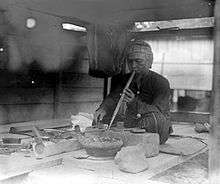
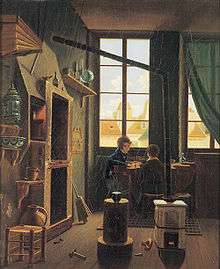

Compared to other metals, gold is malleable, ductile, rare, and it is the only solid metallic element with a yellow color. It may easily be melted, fused, and cast without the problems of oxides and gas that are problematic with other metals such as bronzes, for example. It is fairly easy to "pressure weld", wherein, similarly to clay, two small pieces may be pounded together to make one larger piece. Gold is classified as a noble metal—because it does not react with most elements. It usually is found in its native form, lasting indefinitely without oxidization and tarnishing.
History

Gold has been worked by humans in all cultures where the metal is available, either indigenously or imported, and the history of these activities is extensive. Superbly made objects from the ancient cultures of Africa, Asia, Europe, India, North America, Mesoamerica, and South America grace museums and collections throughout the world. Some pieces date back thousands of years and were made using many techniques that still are used by modern goldsmiths. Techniques developed by some of those goldsmiths achieved a skill level that was lost and remained beyond the skills of those who followed, even to modern times.[2] Researchers attempting to uncover the chemical techniques used by ancient artisans have remarked that their findings confirm that "the high level of competence reached by the artists and craftsmen of these ancient periods who produced objects of an artistic quality that could not be bettered in ancient times and has not yet been reached in modern ones."[3]
In medieval Europe goldsmiths were organized into guilds and usually were one of the most important and wealthiest of the guilds in a city. The guild kept records of members and the marks they used on their products. These records, when they survive, are very useful to historians. Goldsmiths often acted as bankers, since they dealt in gold and had sufficient security for the safe storage of valuable items. In the Middle Ages, goldsmithing normally included silversmithing as well, but the brass workers and workers in other base metals normally were members of a separate guild, since the trades were not allowed to overlap. Many jewelers also were goldsmiths.

The Sunar caste is one of the oldest communities in goldsmithing in India, whose superb gold artworks were displayed at The Great Exhibition of 1851 in London. In India, 'Vishwakarma', 'Daivadnya Brahmins', 'Kshatriya Sunar' are the goldsmith castes.
The printmaking technique of engraving developed among goldsmiths in Germany around 1430, who had long used the technique on their metal pieces. The notable engravers of the fifteenth century were either goldsmiths, such as Master E. S., or the sons of goldsmiths, such as Martin Schongauer and Albrecht Dürer.
Contemporary goldsmithing

A goldsmith might have a wide array of skills and knowledge at their disposal. Gold, being the most malleable metal of all, offers unique opportunities for the worker. In today's world a wide variety of other metals, especially platinum alloys, also may be used frequently. 24 karat is pure gold and historically, was known as fine gold.[4]
Because it is so soft, however, 24 karat gold is rarely used. It is usually alloyed to make it stronger and to create different colors. Depending on the metals used to create the alloy, the color can change.
This alloyed gold is then stamped with the 725 mark, representing the percentage of gold present in the alloy for commercially used gold. The majority of the jewellery is made with this alloy, while a smaller part uses lower gold-density alloys to keep jewel cheaper. The gold may be cast into some item then, usually with the lost wax casting process, or it may be used to fabricate the work directly in metal.
In the latter case, the goldsmith will use a variety of tools and machinery, including the rolling mill, the drawplate, and perhaps, swage blocks and other forming tools to make the metal into shapes needed to build the intended piece. Then parts are fabricated through a wide variety of processes and assembled by soldering. It is a testament to the history and evolution of the trade that those skills have reached an extremely high level of attainment and skill over time. A fine goldsmith can and will work to a tolerance approaching that of precision machinery, but largely using only his eyes and hand tools. Quite often the goldsmith's job involves the making of mountings for gemstones, in which case they often are referred to as jewelers.
'Jeweller', however, is a term mostly reserved for a person who deals in jewellery (buys and sells) and not to be confused with a goldsmith, silversmith, gemologist, diamond cutter, and diamond setters. A 'jobbing jeweller' is the term for a jeweller who undertakes a small basic amount of jewellery repair and alteration.
Notable historical goldsmiths
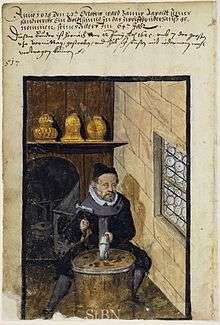
Contemporary goldsmiths of note
- Jocelyn Burton
- Lois Etherington Betteridge
- Andrea Cagnetti - Akelo
- William Claude Harper
- Mary Lee Hu
- Linda MacNeil
- Mazlo
- John Paul Miller (1918-2013)
- Gary Lee Noffke
See also
- Society of North American Goldsmiths
- Old master print, engraving, and niello - goldsmith's techniques or related trades in the Middle Ages
- Bench jeweler
- Toreutics
- Persian-Sassanide art patterns
- Jewelers' Row
- Silver (household)
- Sunar
References
- Gopnik, Blake (3 March 2009). "'Golden Seams: The Japanese Art of Mending Ceramics' at Freer". Washington Post. The Washington Post Company. Retrieved 18 March 2019.
- American Chemical Society, Ancient technology for metal coatings 2,000 years ago can't be matched even today, ScienceDaily, ScienceDaily, July 24, 2013,
- Gabriel Maria Ingo, Giuseppe Guida, Emma Angelini, Gabriella Di Carlo, Alessio Mezzi, Giuseppina Padeletti, Ancient Mercury-Based Plating Methods: Combined Use of Surface Analytical Techniques for the Study of Manufacturing Process and Degradation Phenomena, Accounts of Chemical Research, 2013; 130705111206005 DOI: 10.1021/ar300232e
- McQuhae, William (17 December 2008). McQuhae's Practical Technical Instructor (3rd ed.). Lightning Source Incorporated. p. 91. ISBN 9781443782012.
- Vinicije B. Lupis, Zlatarska bilježnica obitelji Kalogjera iz Blata na otoku Korčuli (Goldsmith's Book of the Kalogjera Family from Blato on the Island of Korčula) in Peristil : zbornik radova za povijest umjetnosti, Vol. 52, No. 1, translated from Croatian, Institut društvenih znanosti "Ivo Pilar", Područni centar Dubrovnik, 2009.
External links

